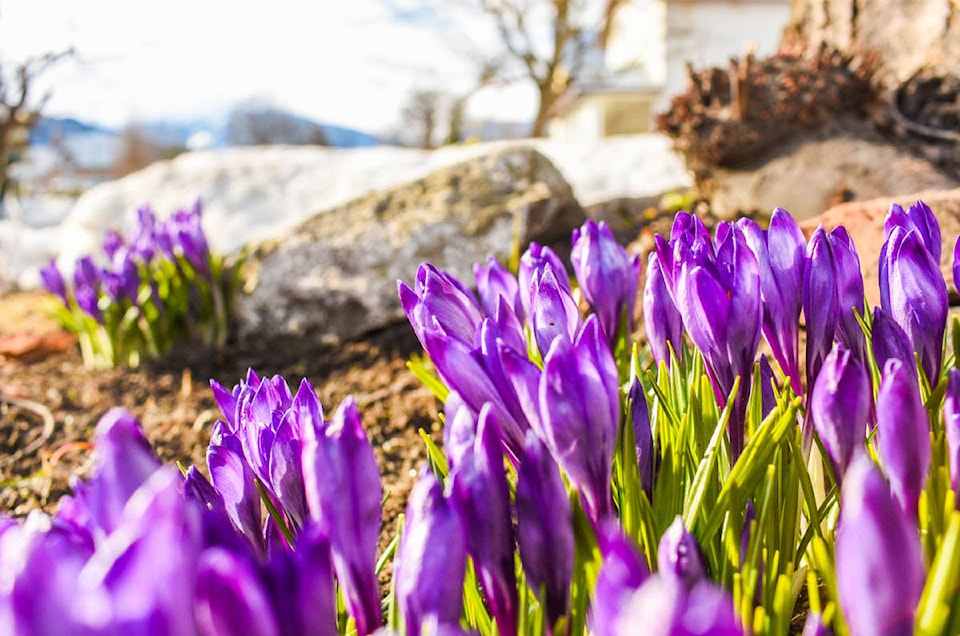There’s an old saying that goes, “March enters like a lion and leaves like a lamb.” March is the dynamic transition month from white, shivering cold winter to the greening warmth of spring.Insects hatch and birds start returning from warmer climates.Birds sing.Flowers bloom.Wildlife breed.Spring starts; it’s the season of renewal.New life springs up and out — maybe that’s why it’s called spring.
Let’s celebrate!Equinox (March 20) is a marvellous time to celebrate these longer, warmer days.Get outside, and stop, look and listen for those first wonderful signs of spring; it’s like a Treasure Hunt.
Robins start calling “Cheer-up!Cheer-up!”
Black-capped Chickadees sing their spring love song “Hi sweetie” besides their regular “chickadee-dee-dee” call.Try making a loud, repeated “pshpshpshhhh” sound.This may lure them closer to investigate. This trick works on many other songbirds as well.
Red-winged Blackbirds with their raspy “ker-eee-ah” are among the earliest migrating birds to return to ponds in spring. The black males are natural show-offs, with their flashy red-and-yellow wing patches and loud, persistent song.
Tall Great Blue Herons return and are fun to watch across from the Big Box Outlet on 24th Street.Take binoculars to view their lovely markings and witness their antics high up in their nests in the cottonwood trees.
Owls hoot at night for mates.
Woodpeckers are territorial drilling to attract mates.
Yellow-belly Marmots are scooting around rocky piles or soaking up the sun.
Garter Snakes emerge from their winter hibernaculum to warm in the sun. You can watch them in the park behind Walmart.If you see one on the road, guide it back to the parkland.
Pussy willows pop out.They’re actually flower buds just before they fully bloom. The soft coating of hairs acts as insulation to protect these early bloomers from cold.Bees and flies help pollinate pussy willows before other pollinators are around.
Buttercups, Yellow Bells, Spring Beauty, Shooting Stars and more native wildflowers adorn Kalamalka Lake Provincial Park’s grasslands.The joyous warbling spring song of the Western Meadowlark fills the air there too.
Early non-native wildflowers like snowdrops, daffodils, tulips and crocuses spring out of the ground around town.
Look for lines of sapsucker’s small well holes on aspens, birches and fruit trees. The sapsuckers drill these, then use their bristle-tipped tongues to lap sap, then return to pick out trapped insects.As spring progresses, hummingbirds take advantage of the freshly-drilled sapsucker feeding stations.
Once pond ice melts, amphibians start arriving to mate.Peepers and wood frogs start off the spring chorus with peeps and chuckles.
These are only a few of the early spring sights and sounds.Head out for walks on nice March days.
Then record your first spring signs on a calendar.You’ll have something to look forward to whenever winter lingers on.Celebrate spring!
READ MORE: Get Outdoors! And go for a walk
READ MORE: COVID-19: B.C. seniors aged 80+ can start to sign up for vaccination on March 8
Roseanne enthusiastically shares her knowledge of the outdoors to help readers experience and enjoy nature. Discover exciting and adventurous natural events, best trails, and wild places. Follow her on Facebook for more.
@VernonNews
newsroom@vernonmorningstar.com
Like us on Facebook and follow us on Twitter.
